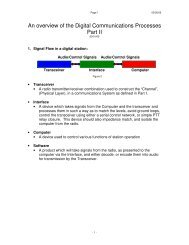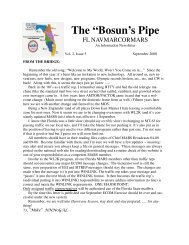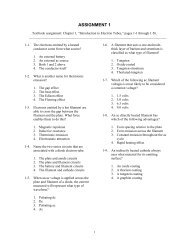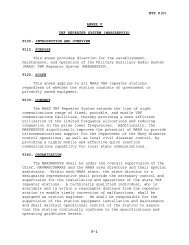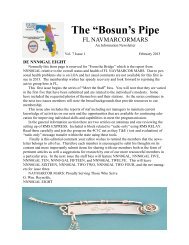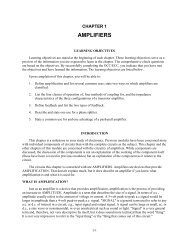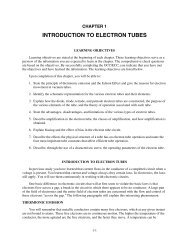Create successful ePaper yourself
Turn your PDF publications into a flip-book with our unique Google optimized e-Paper software.
To increase the range of the 100-microampere meter to 1 ampere (full-scale deflection), place a 0.01-ohm shunt in parallel with the meter movement.You can convert the 100-microampere instrument to a 10-ampere meter by using a proper shunt. Thevoltage drop for a full-scale deflection is still 0.01 volt across the coil and the shunt. The meter current isstill 100 microamperes. The shunt current must therefore be 9.9999 amperes under full-scale deflection.Again, this is an approximate figure found by the application of Ohm’s law.You can also convert the same instrument to a 50-ampere meter by using the proper shunt resistance,as follows:INTERNAL SHUNTS FOR <strong>METERS</strong> IN THE MILLIAMPERE RANGE.—The above methodof computing the shunt resistance is satisfactory in most cases; however, it can only be used when the linecurrent is in the ampere range and the meter current is relatively small compared to the load current. Insuch cases, you can use an approximate value of resistance for the shunt, as was done above. However,when the line current is in the milliampere range and the coil current becomes an appreciable percentageof the line current, a more accurate calculation must be made. For example, suppose you desire to use ameter movement that has a full-scale deflection of 1 milliampere and a coil resistance of 50 ohms tomeasure currents up to 10 milliamperes. Using Ohm's law, you can figure the voltage (E coil ) across themeter coil (and the shunt) at full-scale deflection, as follows:The current that flows through the shunt (I shunt ) is the difference between the line current and themeter current, as figured below:The shunt resistance (R shunt ) may then be figured, as follows:Notice that, in this case, the exact value of shunt resistance has been used rather than anapproximation.3-9






